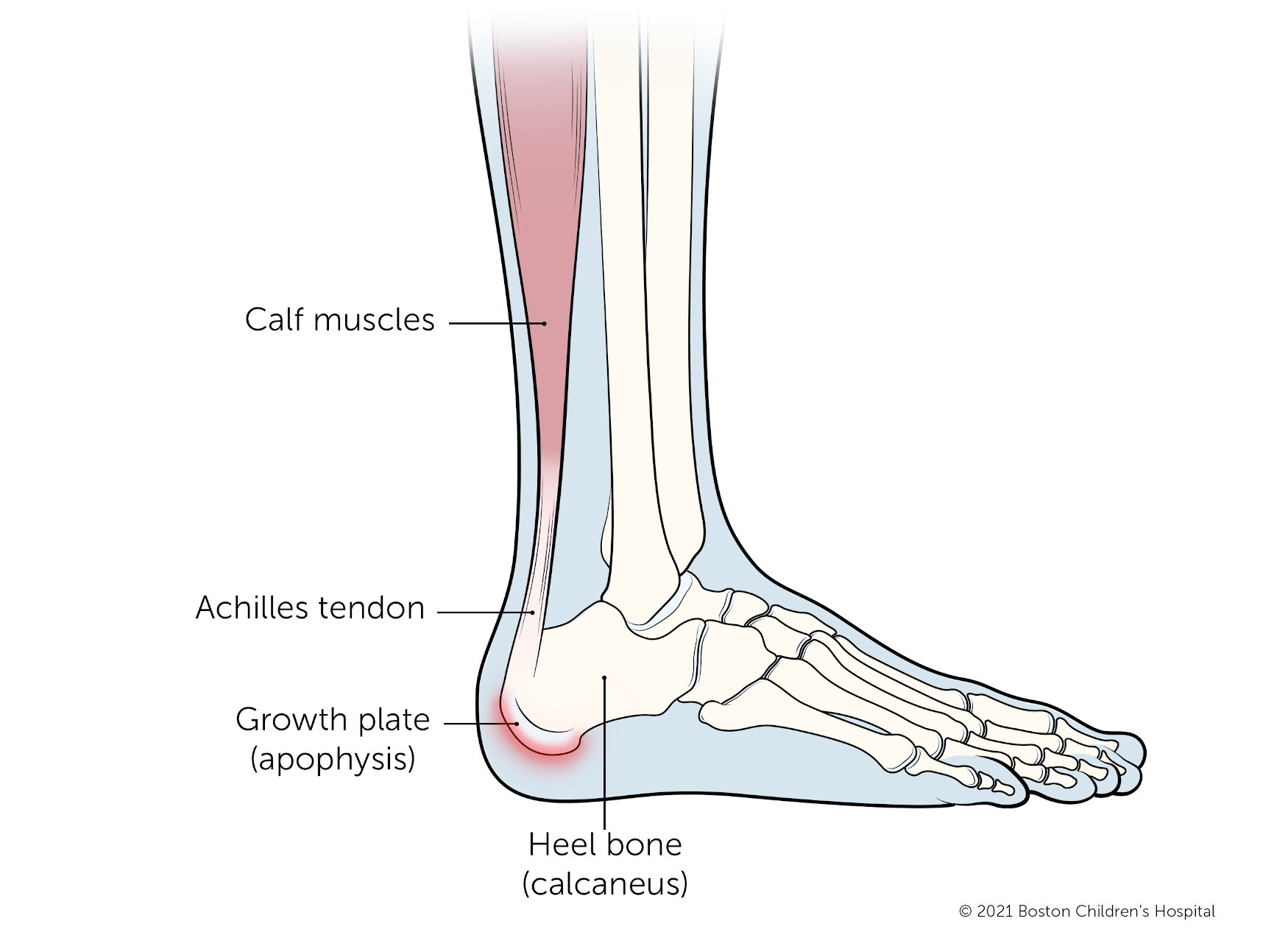What is Sever’s disease?
Sever’s disease is the most common cause of heel pain in growing children, especially those who play sports or exercise regularly. Also known as calcaneal apophysitis, Sever’s disease occurs when the growth plate in the back of the heel becomes inflamed and painful.
What causes Sever’s disease?
Sever’s disease is caused by repetitive stress on the growth plate at the heel bone, at the site where the Achilles tendon pulls on the back of the heel. It typically occurs during periods of rapid growth.

All growing children have growth plates, soft areas of cartilage where bone growth occurs, in their heels and at the ends of several other bones. The Achilles tendon connects the calf muscles to the growth plate in the back of the heel. Because bones often grow faster than muscle, especially in the bones of the foot, the Achilles tendon can become tight at certain points in a child’s physical development.
Sever’s disease occurs when activities like running and jumping cause the already tight Achilles tendon to pull on and irritate the heel bone growth plate. This causes pain and inflammation in the heel.
Certain activities may be related to your child developing Sever’s disease:
- sports that involve running and jumping on hard surfaces (track, basketball, gymnastics)
- overtraining
- shoes that don’t support your child’s feet
Who gets Sever’s disease?
Sever’s disease most often affects children during adolescent growth spurts. In girls, growth spurts typically occur between the ages of 8 and 13. Boys typically have growth spurts when they’re between 10 and 15 years old.
Sever’s disease is rare in older teens. By late adolescence, a child’s growth plates have hardened into solid bone, and their muscles and tendons have lengthened to match the growth of their bones.
Athletes who participate in high-impact sports are at higher risk of developing Sever’s disease. Less active kids can also be affected, however.
What are the symptoms of Sever’s disease?
The most common symptom of Sever’s disease is pain or tenderness in the back of one or both of the heels. The pain usually occurs at the back of the heel, but it can also extend to the sides and bottom of the heel.
If your child has Sever’s disease, their symptoms may include:
- heel pain with limping, especially after running
- swelling and redness around the heel
- foot discomfort or stiffness after sleeping
How is Sever’s disease diagnosed?
Your child’s doctor will gather information about your child’s symptoms. They will also examine your child’s foot, squeezing it at different points to see where it is painful.
The doctor may also order an x-ray to rule out other problems, such as a fracture.
How is Sever’s disease treated?
The primary treatment for Sever’s disease is taking time off from intense activities that cause heel pain. Stretching the calf muscles can help reduce the stress on the heel.
During the healing period, your child’s doctor may also recommend:
- physical therapy to stretch the calf muscle and strengthen the leg muscles and tendons
- placing ice or cold packs on your child’s heel
- over-the-counter medication such as Tylenol or Motrin to reduce swelling
- heel cup inserts that cushion the heel
How we care for Sever’s disease at Boston Children’s Hospital
The Orthopedic Center at Boston Children’s treats thousands of children, adolescents, and young adults with Sever’s disease and other problems of the musculoskeletal system every year.
Experts in our Lower Extremity Program offer comprehensive assessment, diagnosis, and treatment for children with lower limb conditions and have extensive experience treating complex disorders of the feet, ankles, knees, legs, and hips.
Our specialists in the Sports Medicine Division combine their knowledge of sports injuries and orthopedic care to help athletes return to play as strong or stronger than they were before.
Sever's Disease | Programs & Services
Programs
Lower Extremity Program
Program
The Lower Extremity Program offers comprehensive diagnosis and treatment for children with lower extremity disorders.
Departments
Sports Medicine Division
Department
The Pediatric Sports Medicine Division provides comprehensive care to athletes of all ages and abilities, from professional athletes to eager novices.
Centers
Orthopedic Center
Center
Established in 1903, we are one of the world’s most experienced pediatric orthopedic centers. Learn more.

